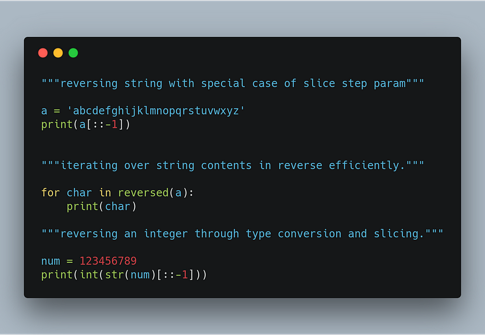
Jeralyn A. • May 24, 2023
Python
H0w Python works?

Python's versatility and ease of use have made it popular across various domains, including web development, scientific computing, data analysis, artificial intelligence, and automation. Its large and active community contributes to its continuous development, making Python a powerful and widely adopted programming language.
Python is a high-level programming language known for its simplicity, readability, and versatility. It was created by Guido van Rossum and first released in 1991. Python supports multiple programming paradigms, including procedural, object-oriented, and functional programming.
Overview of how Python works:
- Interpreted Language: Python is an interpreted language, which means that it does not need to be compiled before execution. Instead, a interpreter reads and executes the code line by line. This allows for quick development and easy debugging.
- Pythonynamic Typing: Python is dynamically typed, meaning you don't need to explicitly declare the variable type. Variable types are inferred at runtime based on the assigned values. This flexibility allows for more agile development and simplifies code maintenance.
- Indentation-based Syntax: Python uses indentation (typically four spaces) to define code blocks instead of explicit curly braces or keywords. This feature, known as "significant whitespace," enforces code readability and consistency.
- Large Standard Library: Python comes with an extensive standard library that provides pre-built modules and functions for various tasks. It offers functionalities for file I/O, networking, web development, data processing, and much more. This vast collection of libraries saves development time and promotes code reuse.
- Third-Party Libraries and Packages: Python has a rich ecosystem of third-party libraries and packages that extend its capabilities. Popular libraries like NumPy, pandas, Matplotlib, and TensorFlow enhance Python's functionality for scientific computing, data analysis, visualization, machine learning, and more.
- Platform Independence: Python is a platform-independent language, meaning that Python code can run on multiple operating systems such as Windows, macOS, and Linux without requiring extensive modifications. This portability makes it suitable for a wide range of applications.
- Integration and Extensibility: Python provides seamless integration with other programming languages, allowing developers to incorporate existing code written in languages like C/C++ and Java. This capability enhances performance and enables access to a vast range of existing libraries and frameworks.
- Readability and Maintainability: Python's syntax is designed to prioritize code readability and maintainability. Its clean and concise syntax, combined with a focus on code readability through indentation, makes Python code easy to understand and maintain. This attribute is particularly valuable for collaborative projects and long-term code maintenance.